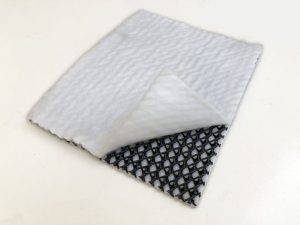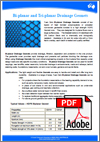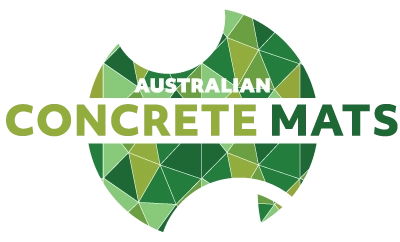Biplanar and Triplanar Drainage Geonets is composed of a high strength HDPE Geonet core with one or more layers of non-woven geotextile bonded to it. They are designed for in-plane flows over large surface areas. The biplanar and triplanar geonet core is UV stabilised with 2% carbon black and is chemically and biologically resistant. Available in 2m and 4m wide rolls with a 10cm fabric overlap, each batch is tested and quality certified. Biplanar and triplanar drainage geonets are also available without a geotextile.

Biplanar Geonets

Composite Triplanar Drainage Geonet
Applications
Biplanar Drainage Geonets can be used in conjunction with geotextiles to provide drainage instead of sand and gravel. They have a low intensity but high elongation and are suited for projects where the foundation is reasonable or the bearing capability demand is low, such as parks, temporary roads, banks and slopes. Biplanar geonets can be used in place of soil drains in civil and environmental applications such as under-slab drainage, leak detection, gas venting, leachate collection and as additional protection for waterproofing membranes.
| Properties | CE111 | CE121 | CE131 | CE131B | CE151 |
|---|---|---|---|---|---|
| Width (m) | 2.5 | ||||
| Length (m) | 50-100 | ||||
| Aperture (mm) | 8-6 | 8-6 | 27-27 | 22-22 | 74-74 |
| Tensile Strength >= (kN/m) | 2.0 | 7.68 | 5.8 | 6.4 | 1.82 |
| Elongation at maximum strain <= (%) | 41.0 | 20.2 | 16.5 | 18.6 | 23.2 |
| Tensile strength at 10% strain >= (kN/m) | 1.32 | 6.80 | 5.20 | 5.74 | 3.83 |
Triplanar Drainage Geonets consist of a draining core with two outer layers of inclined ribs separated by strong vertical ribs. Also known as combi geonets, the whole structure is bonded to a non woven geotextile. The high compressive strength resists crushing and the geotextile delivers a high flow rate under load while preventing soil particles blocking the drainage core. The top and bottom auxiliary ribs also reduce the depth the geotextile intrudes into the core.
Triplanar drainage geocomposites maintain constant hydraulic performance over time and are not subject to compressive creep. They are ideal for leachate drainage and collection in landfills under high compressive loads. They can also be used also as capillary break layer for bases of roads, railways and large areas. Their structure resists cyclic loads caused by the passage of vehicles and the preferential channels convey water along the length of the product.
Specifications
| Physical Properties | Test Method | Units | Type | Mark | ||
|---|---|---|---|---|---|---|
| AYDT1 | AYDT2 | |||||
| Composition | / | / | 3 ribs | 3 ribs | / | |
| Polymer | / | / | HDPE | HDPE | / | |
| Additive | / | / | Carbon black | Carbon black | / | |
| Geometric Properties | ||||||
| Thickness | V=20kPa | ISO9863 | mm | 7.0 | 7.6 | a |
| V=200kPa | ISO9863 | mm | 6.5 | 7.0 | a | |
| Unit weight | ISO9864 | g/m2 | >=1250 | >=1550 | a | |
| Roll width | / | m | 4.00 | 4.00 | a | |
| Roll length | / | m | 25.0 | 25.0 | a | |
| Roll diameter | / | m | 0.50 | 0.53 | a | |
| Technical Characteristic | ||||||
| Transmissivity water | V=20kPa | ISO12958 | l/m/s | 2.60 | 3.00 | a,b,c,d,e |
| V=100kPa | ISO12958 | l/m/s | 2.40 | 2.80 | a,b,c,d,e | |
| V=200kPa | ISO12958 | l/ms | 2.20 | 2.60 | a,b,c,d,e | |
| V=500kPa | ISO12958 | l/ms | 1.80 | 2.20 | a,b,c,d,e | |
| V=1000kPa | ISO12958 | l/ms | 1.30 | 1.50 | a,b,c,d,e | |
| Tensile Strength (KN/M) | ISO10319 | KN/m | 12 | 14 | a,b,e | |
| Elongation, % | ISO10319 | KN/m | 20 | 20 | a,b,e | |
Mark:
a= representative value
b= longitudinal
c= 2mm HDPE condition of pad border
d= l/m/s= 1.0E-3 m2/s
e= transmissivity and tensile strength tested every 25000m2
DOWNLOAD BROCHURE

Triplanar and Triplanar Geonets












